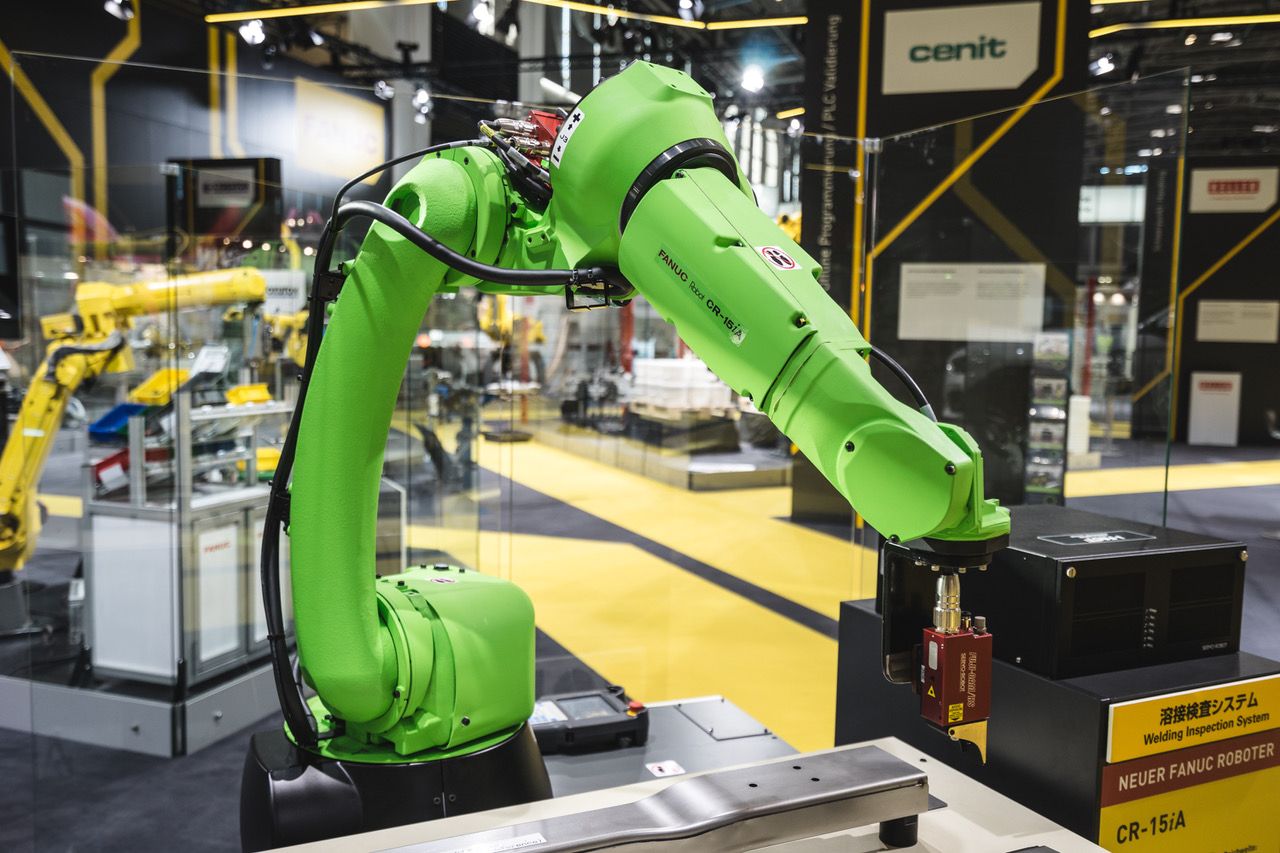Automation is the new norm in every industry and virtually every company. Within manufacturing, growth in the number of collaborative robots is accelerating fast, and with this comes new and exciting opportunities to streamline production.
A lot is happening in the robot industry at the moment. IoT (Internet of Things) is driving development and many companies are adopting new technologies and automating their operations.
“We’re seeing a sharp increase in automation,” says Cerold Andersson, CEO of FANUC Nordic. “Right now, it seems like everyone wants to automate. The manufacturing industry is dominant, but others are following suit, such as the food and pharmaceutical industries. This trend can be seen throughout the industrialized world. Here in the Nordics and western Europe, where workers have a relatively high salary, automation is a way of lowering costs. This makes it possible to bring back some production processes that were previously transferred to ‘lower-wage’ countries.”
Collaborative robots are a logical progression within automation. Although still a fairly new type of robot, they have quickly become popular within industry.
“Collaborative robots, i.e. robots that people can interact and work collaboratively with, are fairly complex,” he says. “Not only do they have to be certified to work hand in hand with humans, their attachments, such as high-powered grippers, have to meet the same standards. Since we launched the world's largest and strongest collaborative robot, the CR-35iA, we have focused on expanding this line of robots. We recently launched the 15-kilo CR-15iA robot, which we believe will be a very popular.”
FANUC's new CR-15iA collaborative robot fills a gap in the market, as it is ideally suited for palletizing, assembling and machine tending.

“It is a very flexible robot,” he continues. “It can help an operator to pick up things from the floor or from a production line, and it can keep them steady as the person mounts them. Many of our partners have told us that the robot is ideal for palletizing in the packaging industry. The CR-15iA is our fastest collaborative robot. If you equip it with a scanner for a secure zone, it can detect if somebody enters the area, and work as quickly as a standard industry robot. The robot also has a vision technology projector on its arm, which enables it to see and move in cramped spaces and pick screws from small boxes.”
Collaborative robots appear to be here to stay. For FANUC, the product range of Cobots (collaborative robots) is still a small percentage of total sales, but large investments in R&D are being made in this area as the company aims to become the industry leader in the segment.
“There are many parameters that can impact the future, but I believe collaborative robots are here to stay. Just look at our Cobots, they deliver big improvements to both efficiency and operator welfare. Also, all industries are automating, whether it’s large series production to one-piece production. Collaborative robots help workers avoid heavy or unfavorable lifting, and that’s where I believe we will see a lot of development. In addition, collaborative robots are quite space-saving, as they do not need to be surrounded by a security fence. Basically, people can move freely around them, which is a big benefit,” concludes Cerold.
FANUC is showcasing the new CR-15 robot at Industrimässorna, Malmö, February 6-7, meet us there in Booth D:11
Opening hours, Feb 6, 9.00-17.00, Feb 7, 9.00-16.00
Register your ticket here
For more information about the fair contact marketing@fanuc.se.